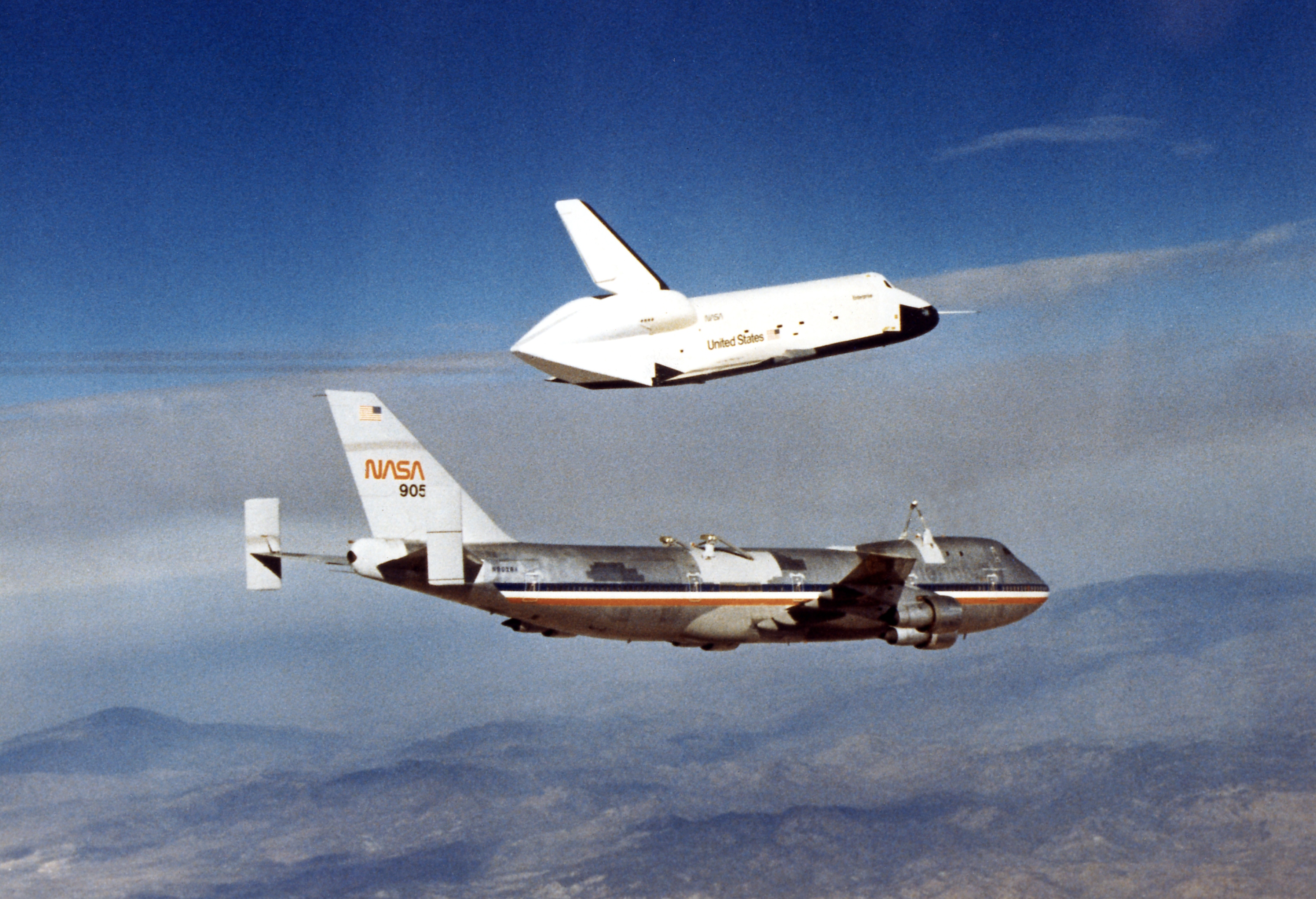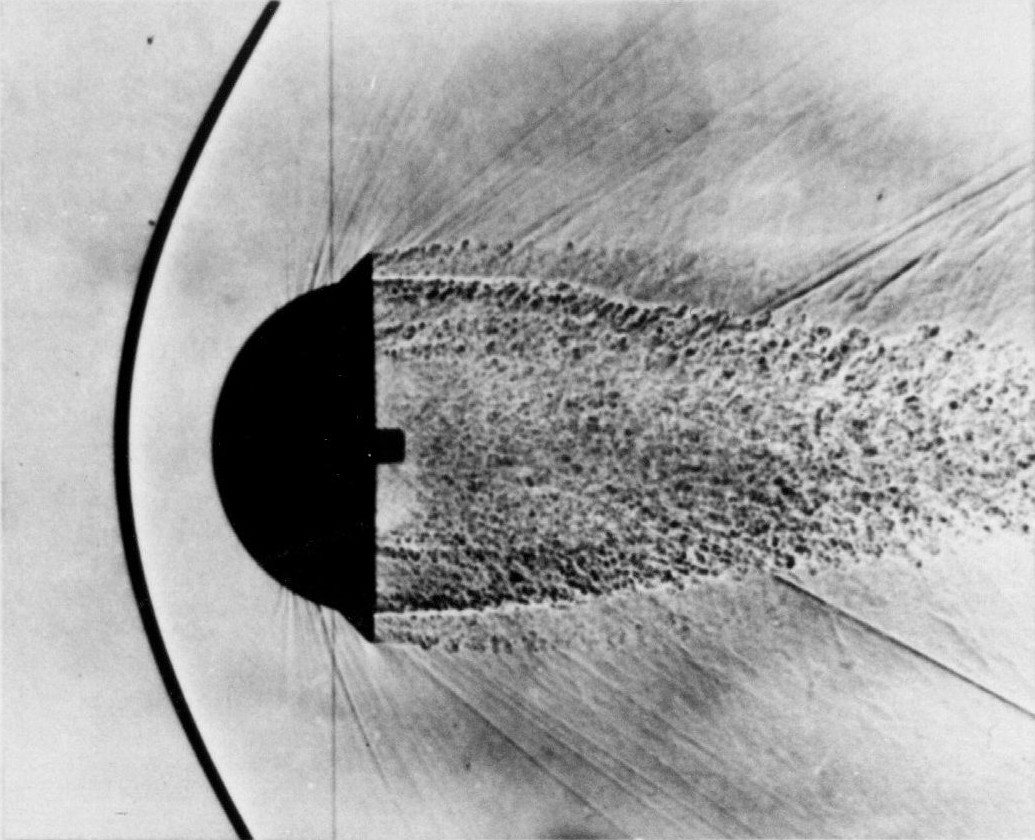|
Aerodynamic Heating
Aerodynamic heating is the heating of a solid body produced by its high-speed passage through air. In science and engineering, an understanding of aerodynamic heating is necessary for predicting the behaviour of meteoroids which enter the earth's atmosphere, to ensure spacecraft safely survive atmospheric reentry, and for the design of high-speed aircraft and missiles. Aircraft The effects of aerodynamic heating on the temperature of the skin, and subsequent heat transfer into the structure, the cabin, the equipment bays and the electrical, hydraulic and fuel systems, have to be incorporated in the design of supersonic and hypersonic aircraft and missiles. One of the main concerns caused by aerodynamic heating arises in the design of the wing. For subsonic speeds, two main goals of wing design are minimizing weight and maximizing strength. Aerodynamic heating, which occurs at supersonic and hypersonic speeds, adds an additional consideration in wing structure analysis. An idealize ... [...More Info...] [...Related Items...] OR: [Wikipedia] [Google] [Baidu] |
Meteoroids
A meteoroid () is a small rocky or metallic body in outer space. Meteoroids are defined as objects significantly smaller than asteroids, ranging in size from grains to objects up to a meter wide. Objects smaller than this are classified as micrometeoroids or space dust. Most are fragments from comets or asteroids, whereas others are collision impact debris ejected from bodies such as the Moon or Mars. When a meteoroid, comet, or asteroid enters Earth's atmosphere at a speed typically in excess of , aerodynamic heating of that object produces a streak of light, both from the glowing object and the trail of glowing particles that it leaves in its wake. This phenomenon is called a meteor or "shooting star". Meteors typically become visible when they are about 100 km above sea level. A series of many meteors appearing seconds or minutes apart and appearing to originate from the same fixed point in the sky is called a meteor shower. A meteorite is the remains of a meteoroid th ... [...More Info...] [...Related Items...] OR: [Wikipedia] [Google] [Baidu] |
Sprint (missile)
The Sprint was a two-stage, solid-fuel anti-ballistic missile (ABM), armed with a W66 enhanced-radiation thermonuclear warhead used by the United States Army from 1975-1976. It was designed to intercept incoming reentry vehicles (RV) after they had descended below an altitude of about , where the thickening air stripped away any decoys or radar reflectors and exposed the RV to observation by radar. As the RV would be traveling at about , Sprint had to have phenomenal performance to achieve an interception in the few seconds before the RV reached its target. Sprint accelerated at 100 ''g'', reaching a speed of in 5 seconds. Such a high velocity at relatively low altitudes created skin temperatures up to , requiring an ablative shield to dissipate the heat. The high temperature caused a plasma to form around the missile, requiring extremely powerful radio signals to reach it for guidance. The missile glowed bright white as it flew. Sprint was the centerpiece of the Nike-X sy ... [...More Info...] [...Related Items...] OR: [Wikipedia] [Google] [Baidu] |
Heat Transfer
Heat transfer is a discipline of thermal engineering that concerns the generation, use, conversion, and exchange of thermal energy (heat) between physical systems. Heat transfer is classified into various mechanisms, such as thermal conduction, Convection (heat transfer), thermal convection, thermal radiation, and transfer of energy by phase changes. Engineers also consider the transfer of mass of differing chemical species (mass transfer in the form of advection), either cold or hot, to achieve heat transfer. While these mechanisms have distinct characteristics, they often occur simultaneously in the same system. Heat conduction, also called diffusion, is the direct microscopic exchanges of kinetic energy of particles (such as molecules) or quasiparticles (such as lattice waves) through the boundary between two systems. When an object is at a different temperature from another body or its surroundings, heat flows so that the body and the surroundings reach the same temperature, ... [...More Info...] [...Related Items...] OR: [Wikipedia] [Google] [Baidu] |
Atmospheric Entry
Atmospheric entry is the movement of an object from outer space into and through the gases of an atmosphere of a planet, dwarf planet, or natural satellite. There are two main types of atmospheric entry: ''uncontrolled entry'', such as the entry of astronomical objects, space debris, or bolides; and ''controlled entry'' (or ''reentry'') of a spacecraft capable of being navigated or following a predetermined course. Technologies and procedures allowing the controlled atmospheric ''entry, descent, and landing'' of spacecraft are collectively termed as ''EDL''. Objects entering an atmosphere experience atmospheric drag, which puts mechanical stress on the object, and aerodynamic heating—caused mostly by compression of the air in front of the object, but also by drag. These forces can cause loss of mass (ablation) or even complete disintegration of smaller objects, and objects with lower compressive strength can explode. Crewed space vehicles must be slowed to subsonic speed ... [...More Info...] [...Related Items...] OR: [Wikipedia] [Google] [Baidu] |
Space Shuttle Columbia Disaster
The Space Shuttle ''Columbia'' disaster was a fatal accident in the United States space program that occurred on February 1, 2003. During the STS-107 mission, Space Shuttle ''Columbia'' disintegrated as it reentered the atmosphere over Texas, killing all seven astronauts on board. The mission was the second that ended in disaster in the Space Shuttle program after the loss of ''Challenger'' and all seven crew members during ascent in 1986. During the STS-107 launch, a piece of the insulative foam broke off from the Space Shuttle external tank and struck the thermal protection system tiles on the orbiter's left wing. Similar foam shedding had occurred during previous Space Shuttle launches, causing damage that ranged from minor to near-catastrophic, but some engineers suspected that the damage to ''Columbia'' was more serious. Before reentry, NASA managers had limited the investigation, reasoning that the crew could not have fixed the problem if it had been confirmed. When ' ... [...More Info...] [...Related Items...] OR: [Wikipedia] [Google] [Baidu] |
Space Shuttle Columbia
Space Shuttle ''Columbia'' (OV-102) was a Space Shuttle orbiter manufactured by Rockwell International and operated by NASA. Named after the Columbia Rediviva, first American ship to circumnavigate the upper North American Pacific coast and the Columbia (personification), female personification of the United States, ''Columbia'' was the first of five Space Shuttle orbiters to fly in space, debuting the Space Shuttle, Space Shuttle launch vehicle on STS-1, its maiden flight in April 1981. As only the second full-scale orbiter to be manufactured after the Approach and Landing Tests, Approach and Landing Test vehicle ''Space Shuttle Enterprise, Enterprise'', ''Columbia'' retained unique features indicative of its experimental design compared to later orbiters, such as test instrumentation and distinctive black Chine (aeronautics), chines. In addition to a heavier fuselage and the retention of an internal airlock throughout its lifetime, these made ''Columbia'' the heaviest of the fi ... [...More Info...] [...Related Items...] OR: [Wikipedia] [Google] [Baidu] |
Airframe
The mechanical structure of an aircraft is known as the airframe. This structure is typically considered to include the fuselage, undercarriage, empennage and wings, and excludes the propulsion system. Airframe design is a field of aerospace engineering that combines aerodynamics, materials technology and manufacturing methods with a focus on weight, strength and aerodynamic drag, as well as reliability and cost.Michael C. Y. Niu (1988). ''Airframe Structural Design''. Conmilit Press LTD. History Modern airframe history began in the United States when a 1903 wood biplane made by Orville and Wilbur Wright showed the potential of fixed-wing designs. In 1912 the Deperdussin Monocoque pioneered the light, strong and streamlined monocoque fuselage formed of thin plywood layers over a circular frame, achieving . First World War Many early developments were spurred by military needs during World War I. Well known aircraft from that era include the Dutch designer Anth ... [...More Info...] [...Related Items...] OR: [Wikipedia] [Google] [Baidu] |
Tile
Tiles are usually thin, square or rectangular coverings manufactured from hard-wearing material such as ceramic, stone, metal, baked clay, or even glass. They are generally fixed in place in an array to cover roofs, floors, walls, edges, or other objects such as tabletops. Alternatively, tile can sometimes refer to similar units made from lightweight materials such as perlite, wood, and mineral wool, typically used for wall and ceiling applications. In another sense, a tile is a construction tile or similar object, such as rectangular counters used in playing games (see tile-based game). The word is derived from the French word ''tuile'', which is, in turn, from the Latin word ''tegula'', meaning a roof tile composed of fired clay. Tiles are often used to form wall and floor coverings, and can range from simple square tiles to complex or mosaics. Tiles are most often made of ceramic, typically glazed for internal uses and unglazed for roofing, but other materials are also c ... [...More Info...] [...Related Items...] OR: [Wikipedia] [Google] [Baidu] |
Space Shuttle
The Space Shuttle is a retired, partially reusable low Earth orbital spacecraft system operated from 1981 to 2011 by the U.S. National Aeronautics and Space Administration (NASA) as part of the Space Shuttle program. Its official program name was Space Transportation System (STS), taken from a 1969 plan for a system of reusable spacecraft where it was the only item funded for development. The first ( STS-1) of four orbital test flights occurred in 1981, leading to operational flights (STS-5) beginning in 1982. Five complete Space Shuttle orbiter vehicles were built and flown on a total of 135 missions from 1981 to 2011. They launched from the Kennedy Space Center (KSC) in Florida. Operational missions launched numerous satellites, interplanetary probes, and the Hubble Space Telescope (HST), conducted science experiments in orbit, participated in the Shuttle-''Mir'' program with Russia, and participated in construction and servicing of the International Space Station (ISS). ... [...More Info...] [...Related Items...] OR: [Wikipedia] [Google] [Baidu] |
Sublimation (phase Transition)
Sublimation is the transition of a substance directly from the solid to the gas state, without passing through the liquid state. Sublimation is an endothermic process that occurs at temperatures and pressures below a substance's triple point in its phase diagram, which corresponds to the lowest pressure at which the substance can exist as a liquid. The reverse process of sublimation is deposition or desublimation, in which a substance passes directly from a gas to a solid phase. Sublimation has also been used as a generic term to describe a solid-to-gas transition (sublimation) followed by a gas-to-solid transition ( deposition). While vaporization from liquid to gas occurs as evaporation from the surface if it occurs below the boiling point of the liquid, and as boiling with formation of bubbles in the interior of the liquid if it occurs at the boiling point, there is no such distinction for the solid-to-gas transition which always occurs as sublimation from the surface. At ... [...More Info...] [...Related Items...] OR: [Wikipedia] [Google] [Baidu] |
Bow Shock (aerodynamics)
A bow shock, also called a detached shock or bowed normal shock, is a curved propagating disturbance wave characterized by an abrupt, nearly discontinuous, change in pressure, temperature, and density. It occurs when a supersonic flow encounters a body, around which the necessary deviation angle of the flow is higher than the maximum achievable deviation angle for an attached oblique shock (see detachment criterion). Then, the oblique shock transforms in a curved detached shock wave. As bow shocks occur for high flow deflection angles, they are often seen forming around blunt bodies, because of the high deflection angle that the body impose to the flow around it. The thermodynamic transformation across a bow shock is non-isentropic and the shock decreases the flow velocity from supersonic velocity upstream to subsonic velocity downstream. Applications The bow shock significantly increases the drag in a vehicle traveling at a supersonic speed. This property was utilized in t ... [...More Info...] [...Related Items...] OR: [Wikipedia] [Google] [Baidu] |










